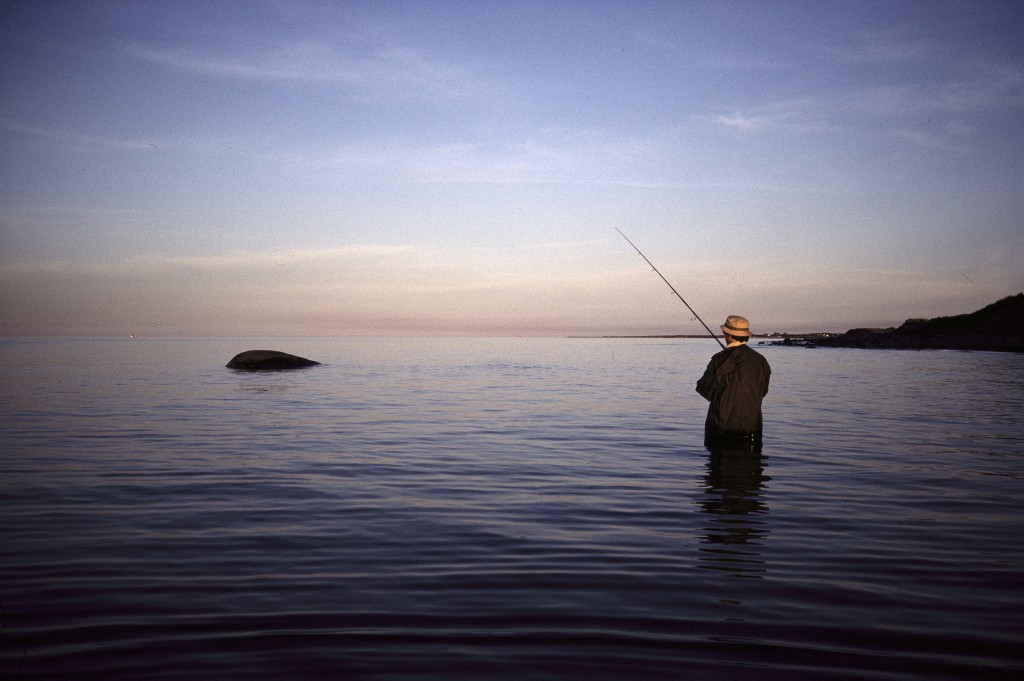
Despite it tiny size, Denmark continues to produce the world’s largest sea run brown trout. In 1991 a new record sea trout weighing a whopping 16.7 kilos (36 lbs. plus!) was caught in Jutland’s River Karup!
Denmark is a small and flat lowland country bordered on all sides by the sea. While the surrounding sea is by no means the ocean (being very shallow with depths seldom exceeding 20 metres), its coastal waters are extremely productive when it comes to fish food. The brackish water teems with shrimps and forage fish which provide the basis for the very fast growth of native Danish sea trout.
If the above sounds like something close to Paradise, please let me correct you. Being a flat lowland (its highest point in fact only 173 metres above the sea), Denmark has a tradition for farming going back several hundred years. And mind you, Danish farmers areextremely good at what they are doing. In fact they are so efficient, that today they pose by far the greatest threat to the Danish environment.
Artificial fertilizers and pesticides are slowly leaking into our treasured clean ground water and thus polluting it and creating the need for very expensive cleaning procedures. As a matter of fact it has been calculated that, all in all, the Danish farmers – despite agricultural export of almost gigantic proportions – are a burden to the Danish society. Basically due to the environmental harm that they do.
Fish stocks
Though Danish rivers today look very little like they did in them good old days – before the turn of the century – they still provide anglers with great opportunities to catch large sea trout, stationary brown trout, rainbows (escapees from the abundant fish farms in both river and sea) and (in some rivers) European grayling.
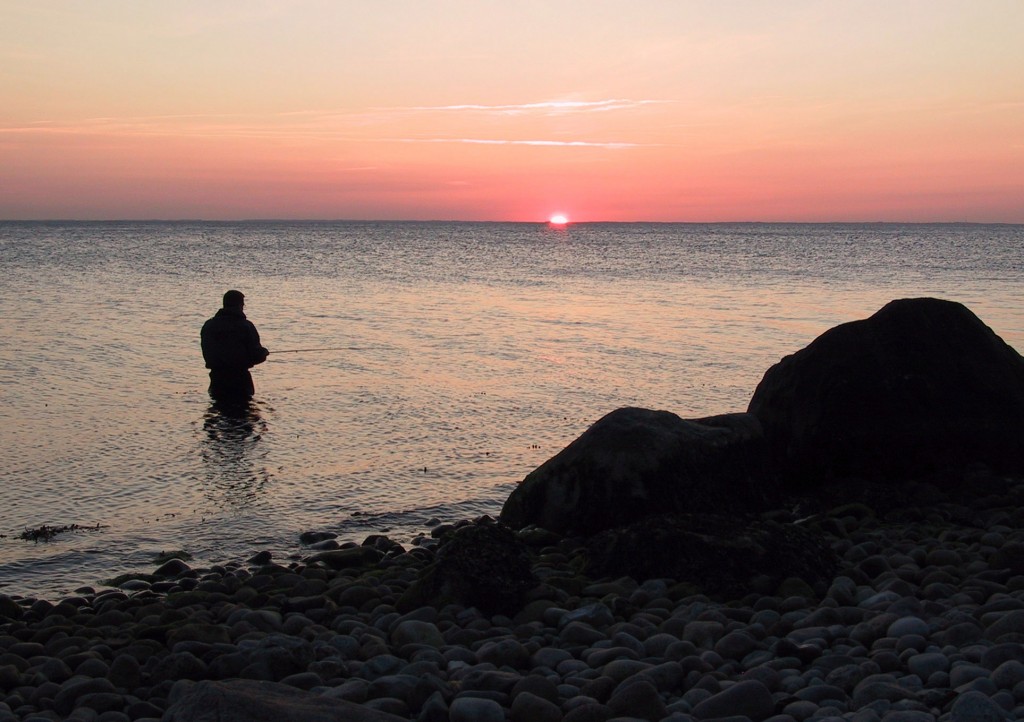
Originally, Danish rivers meandered their way through forest clad landscapes. Not so any more. Today most forests have been cut down giving way to extensive grain fields, and most meandering rivers have been channelized to provide farmers with an efficient way of getting rid of drain water from the fields.
Most of the harm was done beginning in 1864 after the Danish-German war and escallating up through the first half of this century. Today, the Danish government is very much aware that the times they are achanging, and that rivers should be left to meander as they once did. Projects are even undertaken to put the bends back in some of the major rivers!
Despite all of this hardship, Denmark keeps on providing the world’s largest sea run brown trout. Each year a number of fish exceeding 10 kilos (22 lbs.) are caught.
Originally, most of these giants were caught exclusively in the rivers of Jutland (the continental part of Denmark where all the major river systems are located, the rest of the country being islands of smaller size), but today’s saltwater boat fishermen, using downriggers and sophisticated electronic equipment, now catch an increasing share of the really big ones. Thus the new Danish sportfishing record, a fish of 15,15 kilos (33 lbs. plus) caught in 1992, was caught by trolling in the sea.
The previous record, a fish of 14.4 kilos (31 lbs. plus), was caught spinning in the River Karup way back in 1939. The current Danish record sea trout on fly weighed 13,85 kilos (30 lbs. plus) and was caught in the River Gels in 1985.
Originally, a number of Danish west coast rivers had an excellent stock of Atlantic salmon running very big indeed. Thus the Danish sportfishing record was a magnificent mint bright salmon weighing no less than 26,5 kilos (almost 60 lbs.) caught by spinning in the River Skjern in 1956.
Unfortunately most Danish stocks have been wiped totally out since then (again due primarily to the requirements of the farming industry) so that today we only have one self reproducing natural stock left. But increasing efforts are being made to restore the once magnificent runs of huge Atlantic salmon in the nine major river systems of Jutland.
The River Guden is currently by far the most productive. The annual catch here by sportfishermen is estimated to be around 1.000 adult salmon, due exclusively to massive annual smolt releases.
River fishing
Despite the return of salmon, sportfishing in Denmark is almost exclusively focused on the prolific and fast growing sea trout in both river and sea. As previously mentioned, all major river systems are located in continental Jutland with the rivers Guden, Karup, Storå, Skjern, Varde, Kongeå and Ribe being the main fish producers.
Fishing in these rivers usually starts January 16 where “greenlanders” (the Danish name for small, overwintering immature sea trout in prime condition) together with spent and spawned out fish in bad to extremely bad condition dominate the catches. Serious and decent fishermen leave the spawned out fish alone and concentrate on the fat “greenlanders” instead, using light fly and spinning tackle. The “greenlanders” are mostly in the 35-45 cm range.
The “real” river fishing season for sea trout usually starts around June 5 where most major rivers experience the first run of large and mature sea trout. The first fish are often the largest with many silvery sea trout in the 5-10 kilo range being caught. From June on and proceeding to the end of the season (usually November 15) more and gradually smaller sea trout run the rivers and join the often fierce battle for the best holding spots.
Fresh run and silvery sea trout often strike willingly at anything presented to them while it usually takes more persuading to entice them into striking when they have been in the river for a while. Towards the end of the season – and close to spawning – the large and now coloured males again become aggressive and can now be teased into striking by presenting large and gaudy flies, spinners and wobblers.
A very substantial part of all river caught sea trout are caught late evening all through pitch black darkness and into the very early morning, sea trout being predominantly night active.
Spinning is done by most people with 8-9 foot rods, fixed spool reels loaded with 10-12 lbs. monofilament and an assortment of spinners, spoons and floating wobblers in the 10-20 gram range (3/4 – 1 1/2 oz.) Most local fishermen (those that catch the majority of the fish) prefer the fly and use long doublehanded 12-14 foot rods with floating lines during the night. Daytime fishing is done with sinking (Wet Cell II) lines.
Typically, Danish sea trout flies are bushy affairs size 2-6 with no resemblance whatsoever to traditional salmon flies. Patterns for night fly fishing typically being all-black and much larger to produce a marked silhouette.
Popular colors for daytime fishing are black, brown, red and orange – often with white wings. Fly patterns used reflect the fairly slow current of Danish rivers and the predominant tea colour of the water.
Count on paying anywhere form US$10-100 for a days river fishing, guided or unguided.
Saltwater fishing
Whereas river fishing for sea trout is basically a continental affair here in Denmark, thousands and thousands of sea trout are caught annually along most of the Danish coastline which spans an impressive 8.000 kilometres!
The length of the coastline reflects the huge number of smaller and larger islands which comprise the non-continental part of Denmark. In the shallow water surrounding Denmark sea trout find an underwater Heaven on Earth. Food items of all sorts abound and provide easy prey for hungry sea trout.
Originally, almost all angling for sea trout in the salt was done by spinning, and still today spinning gear makes up the basic armament of most Danish fishermen. Light rods in the 8-10 foot range with fixed spool reels loaded with 6-10 lbs. monofilament make up the universal tackle used along the Danish coastline and make long casts in the vicinity of 100 yds. possible. The longer you cast and the more water you cover, the more fish you get in contact with. That is a basic rule that applies to most of the coastline.
Most fish are caught on spoons and special plugs in the 10-20 gram range with silver, blue and green being the best bet in the summer half of the year. During winter time, in water often colder than 5 degrees Celsius, hot fluorescent orange and red colours dominate among succesful lures.
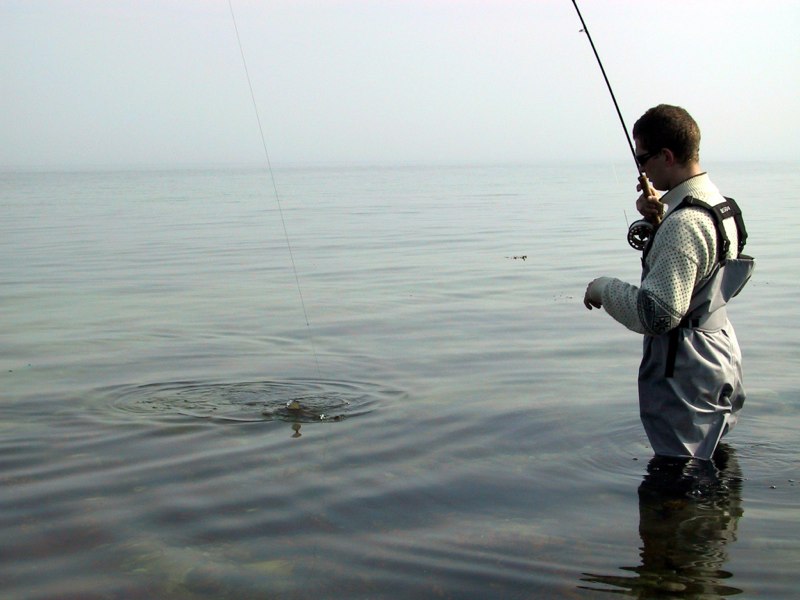
In recent years saltwater flyfishing has experienced a tremendous growth in Denmark. So much that today you may see as many – or even more – fly fishermen fishing the shallow water wading from the shoreline as you see fishermen using spinning gear. The advent of long and light graphite rods coupled with light and saltwater resistant fly reels has made this exciting development possible.
Standard equipment is a 9-10 foot long rod for 7-8 weight lines. Forward tapers are preferred as are floating lines for shallow and quiet water in the sheltered bays. On more open and windy shorelines intermediate lines are preferred to get below the waves to facilitate a good contact to the fly during the retrieve. 100 yds. of backing is needed.
Fly patterns have been developed that closely imitate the basic food items of the sea trout but such flies are not favoured nearly as much by the trout as by the fly fishermen and fly tiers. The fact remains that gaudy flies – often in flourescent red and orange – that imitate absolutely nothing take most of the fish!
The sea is a vast expanse of water and the sea trout is an opportunistic feeder. That’s why attractor style flies do best. It should be admitted though, that there are indeed situations – mostly on calm and sunny days in late summer and early autumn – where imitative patterns definitely do better than the attractor flies. 9-12 foot leaders tapering to 1-3X are adequate.
Sea trout migrations
In the sea, trout can be caught all year long but – depending on the geographic location – the are definitely peak seasons. With the approach of winter a migration of silvery and immature trout is seen from open water of a higher salinity towards sheltered bays with more brackish water.
If winter does not provide an ice cover, fishing may remain excellent all during winter. But only in the sheltered brackish water bays and in the southern Baltic part of Denmark. In the Baltic part of the country salinity remains low which appeals very much to winter time sea trout. If the water temperature sinks too low, saltwater trout have a problem with their osmoregulation in water of high salinity. That’s why they look for brackish water during winter.
If on the other hand we have a long and cold winter with ice covering the bays and possibly even the more open coastlines, then the majority of immature sea trout will leave the salt and opt for a few months of freshwater feeding instead.
Come spring and higher water temperatures, overwintering sea trout leave the rivers and bays and start migrating towards more open and more salty waters. This migration usually takes place sometime in March though extremely cold winters may postpone it until the end of April.
Generally speaking March, April and May are the peak season months for saltwater sea trout fishing. In May and June you do best fishing from sunset all through the night and until sunrise. In the heat of midday, sea trout usually leave the hot shallows only to return again when the sun sets. All during the day sea trout may be caught in deeper water using downriggers for those who like this approach.
July and August are the two least productive months when it comes to saltwater fishing. Fishing starts to pick up again in September with fish in marvellous condition. Thus they are often dificult to lure into striking. Being well fed they often prefer small imitative flies fished deep on long fine leaders. October is usually an excellent month for fishing though most of the bigger trout have now left the sea and are on their way up the rivers to spawn. Smaller trout in the 2-4 lbs. range can still be caught though.
The average Danish sea trout in saltwater will be in the 2-4 lbs. range with fish up to 6 lbs. being common. Fish to 10 lbs. are caught regularly on most coastlines.
Saltwater fishing is basically free for everybody provided that you pay a state fishing license. It was introduced beginning 1993 and costs 100 Danish crowns per year (about 15 US$). The revenue is used for fisheries management only. License can be aqquired at any post office.
Travel information
Whether you are a business man passing by or simply a tourist, your port of entrance to the Scandinavian countries will be Kastrup airport just outside of Copenhagen. This is where most international flights leave and land.
From there it is easy to proceed to the other Scandinavian capital cities – and even easier to depart for other cities in Denmark. Domestic flights will take you to Jutland (where all the major trout rivers are located) in less than half an hour.
Connecting flights can easily be booked from abroad as they are all closely linked with SAS, Scandinavian Airlines System. Count on paying US$100-180 for your domestic round trip ticket.
If you would like additional information on when to go where and how, feel free to contact me on the numbers and address below:
© Steen Ulnits phone: int. +45 2332 8988 mail: steen@ulnits.dk

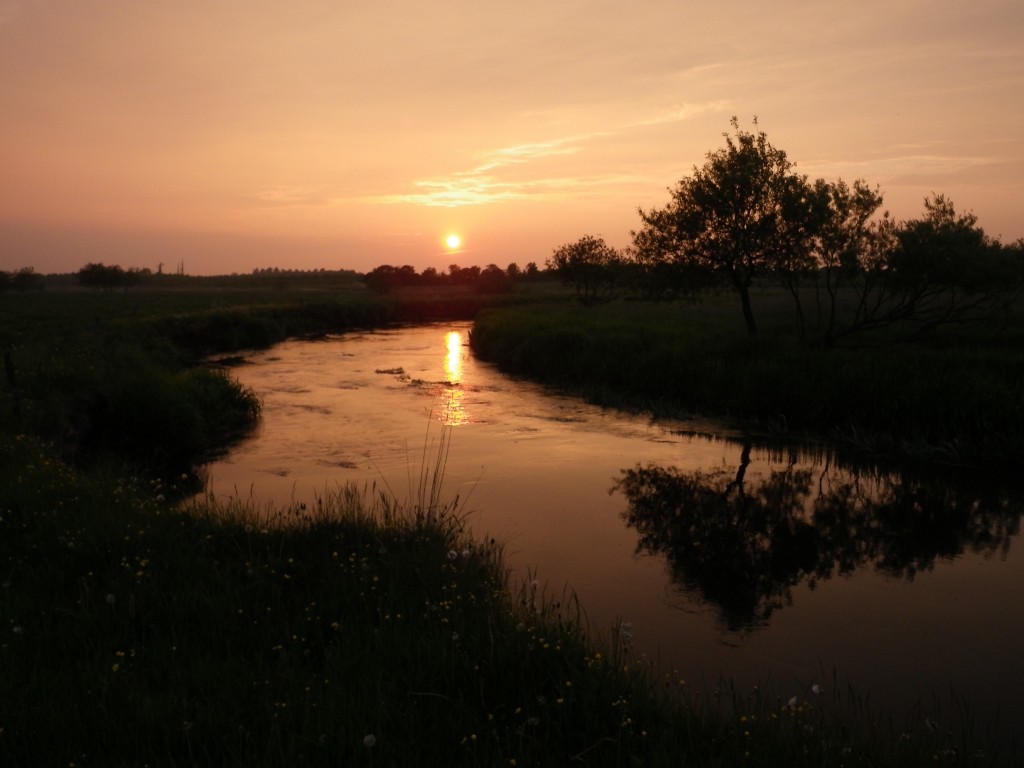
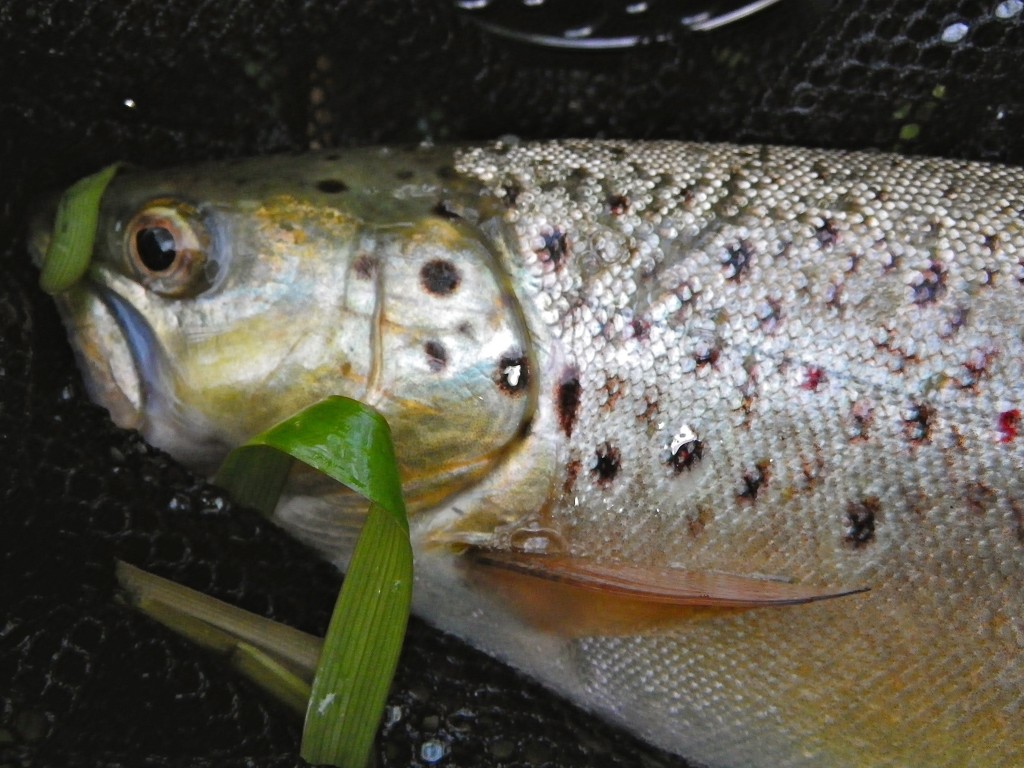
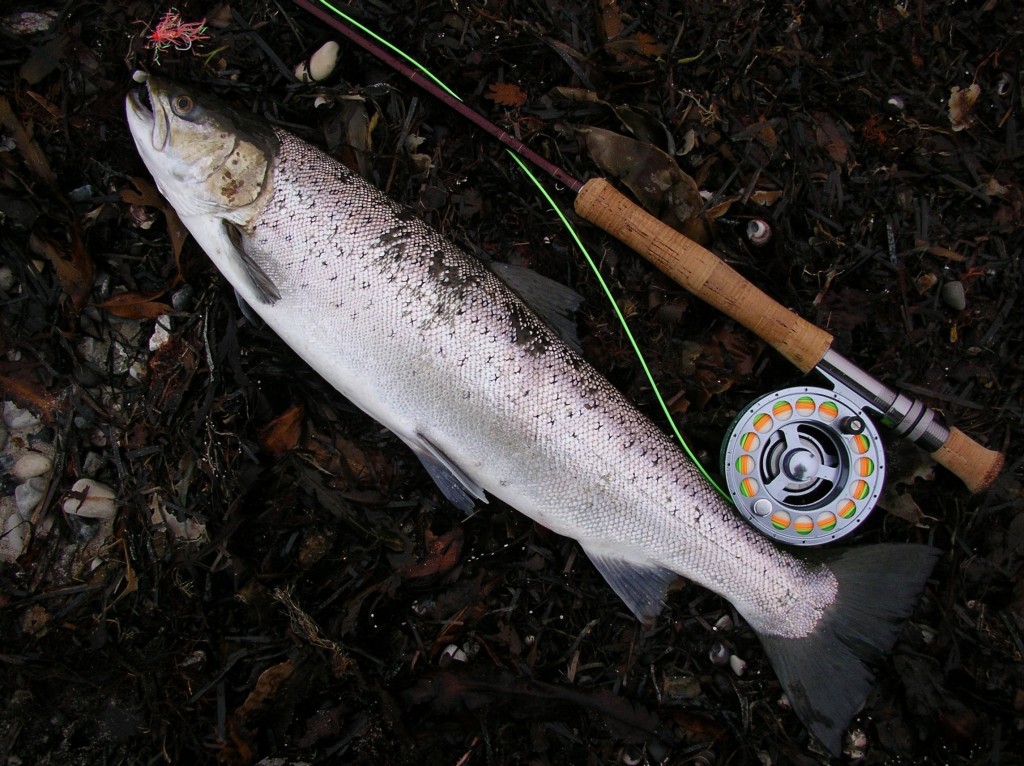
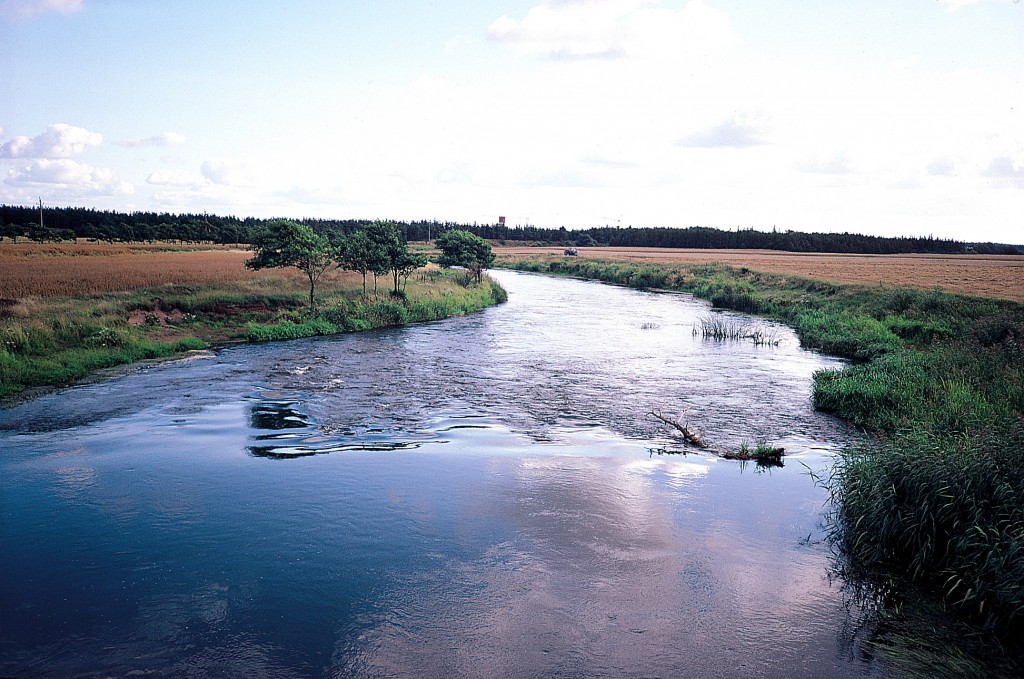
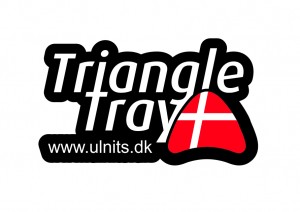
Del denne artikel: